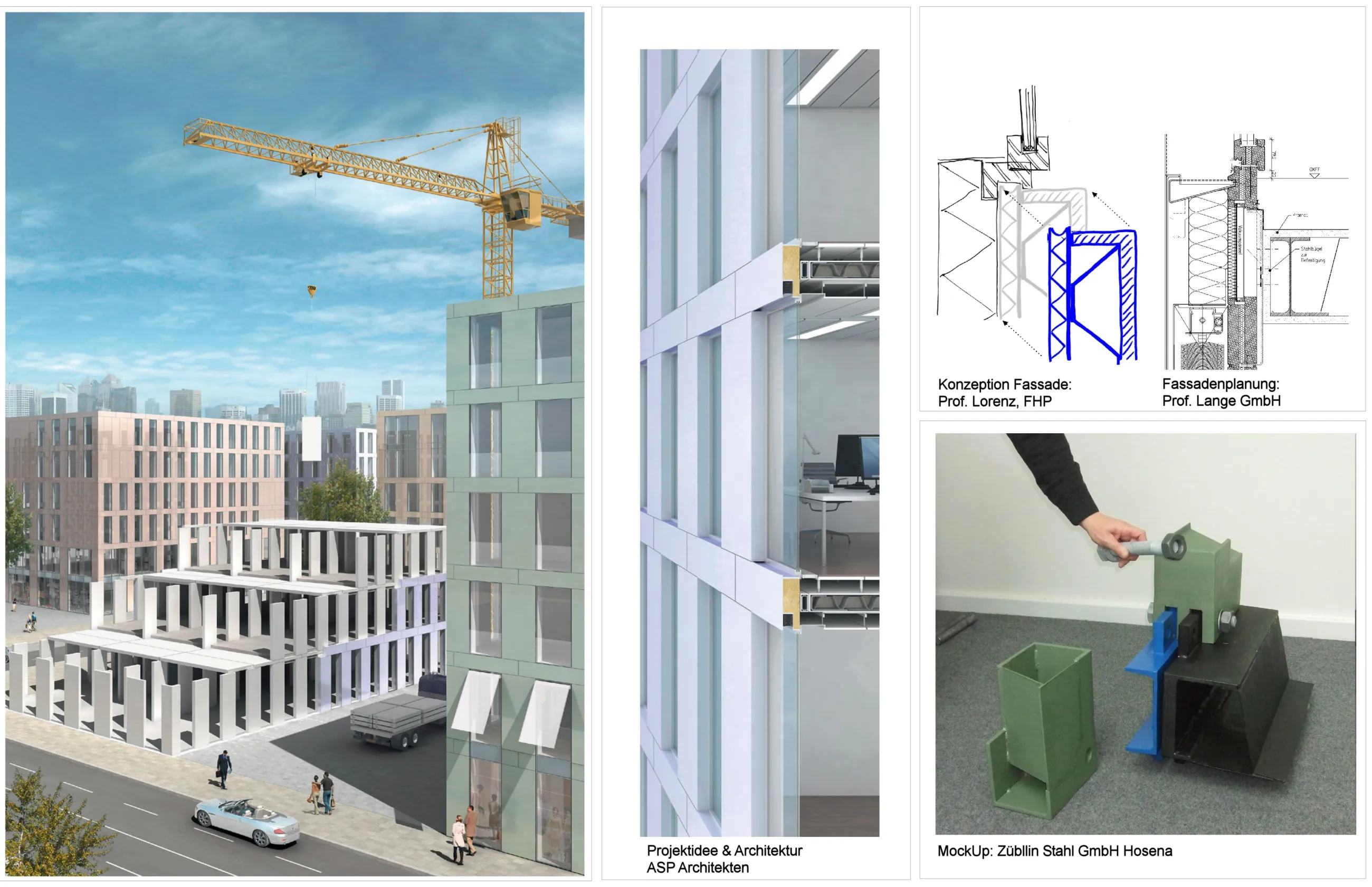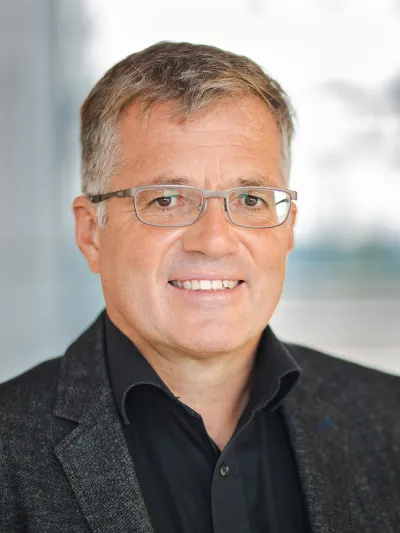FOSTA – Building as a Steel Component System
Development of a component system in steel construction under consideration of architectural, constructive and energetic requirements

- Funding Forschungsvereinigung Stahlanwendung e.V. Düsseldorf VP752,
- Research group under the direction of ASP Architekten consisting of: Drewes + Speth structural engineering, Bohne technical equipment, Michael Lange GmbH façade consulting/ building physics and building climatics, HHP Nord/Ost fire protection.
- Industrial participation: ThyssenKrupp Steel Europe AG Duisburg, voestalpine Stahl GmbH Linz/Austria, Salzgitter AG, Zübllin Stahl GmbH Hosena
Project objective:
The project idea is to construct buildings that are assembled like a car from prefabricated components with high precision and their own aesthetics. The material steel allows a contemporary production method here.
Today's architecture in multi-storey construction in Germany is generally (approx. 85 %) characterised by construction methods using in-situ concrete and prefabricated concrete elements. The disadvantageous effects of these conventional construction methods result in particular from the unique character of the buildings, the high proportion of production on the construction site, the different component tolerances and the large number of interfaces.
The aim of the project is therefore the development of integrated construction elements made of steel, which can be assembled into different types of buildings in a modular fashion. Despite their standardisation, different combinations of the individual elements should allow the design of individual buildings.
Contact
Project manager FHP
Head of the Building Physics and Building Climatics Working Group of Michael Lange GmbH
